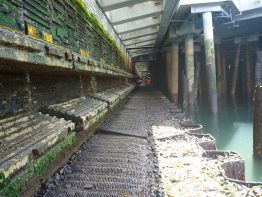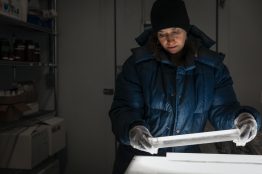It is graduation season, and with that comes well wishes for our graduates and an opportunity to shine a light on their accomplishments. In appreciation of their contributions to enriching the College of the Environment in numerous ways, the College has decided to fund a project jointly with the Campus Sustainability Fund. Recognizing our students are the next generation of leaders in environmental science and decision-making, we believe this is a contribution that showcases our collective commitment to the sustainability and the well-being of our Husky Community and our planet.
Read more »Wolves need space to roam to control expanding coyote populations
New research shows that apex predators need vast expanses of territory in order to compete with next-in-line predators and effectively control the balance of their ecosystems.
Read more at UW Today »Seattle seawall’s novel fish features are a potential model for the world
The modifications designed for Seattle's seawall are aimed at helping young Chinook, pink and chum salmon navigate, grow and avoid predators along the engineered shoreline.
Read more »Pumping up a new record: 10 million gallons of sewage diverted from Washington waters in 2016
In 2016, the Washington Clean Vessel Act, a joint project of Washington State Parks, U.S. Fish and Wildlife and Washington Sea Grant, helped divert a record 10 million gallons of raw sewage from Puget Sound, Lake Washington and other state waterways that previously would have been dumped into vulnerable waters. Instead it was collected for safe onshore treatment. This diversion is largely a result of training, outreach and federal funds provided by U.S.
Read more at UW Today »Earth's atmosphere more chemically reactive in cold climates
Unseen in the air around us are tiny molecules that drive the chemical cocktail of our atmosphere. As plants, animals, volcanoes, wildfires and human activities spew particles into the atmosphere, some of these molecules act as cleanup crews that remove that pollution. The main molecules responsible for breaking down all these emissions are called oxidants. The oxygen-containing molecules, mainly ozone and hydrogen-based detergents, react with pollutants and reactive greenhouse gases, such as methane.
Read more at UW Today »





